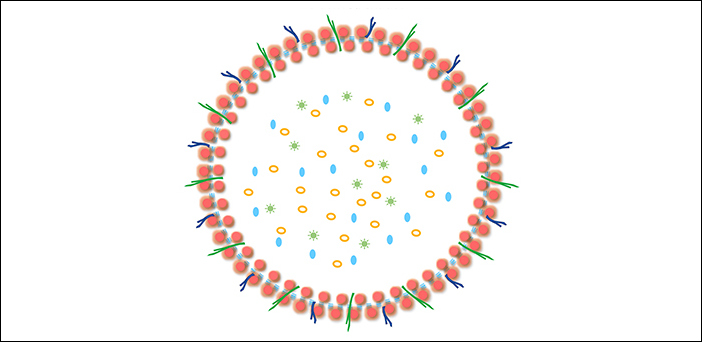Findings may inform ways to reduce male-to-female HIV transmission

Credit: Section on Intercellular Interactions, NICHD, NIH
WHAT:
Nano-sized vesicles released by certain bacteria that inhabit the vagina may protect against HIV infection, suggests a study of human cells and tissues by researchers at the National Institutes of Health and the University of Bologna, Italy. Known as extracellular vesicles, these bubble-like particles are produced by many kinds of cells and are thought to transport molecules from one cell to another. The study was led Leonid Margolis, Ph.D., of NIH’s Eunice Kennedy Shriver National Institute of Child Health and Human Development (NICHD). It appears in Nature Communications.
The researchers conducted a series of experiments showing that vesicles isolated from four strains of Lactobacillus bacteria interfere with the ability of HIV to infect cells. In one experiment, researchers added vesicles to cultures of immune cells known as T lymphocytes and infected the cultures with HIV. HIV infection in the treated cells was much lower than in the untreated cells. When the researchers increased the quantity of vesicles, a much smaller proportion of cells were infected.
Similarly, treatment with vesicles reduced HIV infection in human lymph and uterine cervix and vaginal tissues. The researchers found that bacterial vesicles suppressed the binding of viruses to the cell surface, an essential step before the virus can infect a cell. Further experiments showed that bacterial vesicles directly affect HIV rather than cells. Exposing the viruses to vesicles reduced the appearance of surface molecules on the virus’ outer covering, which it needs to attach to cells.
WHO:
Leonid Margolis, Ph.D., a senior investigator in the NICHD Section on Intercellular Interaction, is available for comment.
ARTICLE:
Ñahui Palomino, RA. Extracellular vesicles from symbiotic vaginal Lactobacilli inhibit HIV-1 infection of human tissues. Nature Communications.2019.
###
About the Eunice Kennedy Shriver National Institute of Child Health and Human Development (NICHD): NICHD leads research and training to understand human development, improve reproductive health, enhance the lives of children and adolescents, and optimize abilities for all. For more information, visit https://www.nichd.nih.gov.
About the National Institutes of Health (NIH): NIH, the nation's medical research agency, includes 27 Institutes and Centers and is a component of the U.S. Department of Health and Human Services. NIH is the primary federal agency conducting and supporting basic, clinical, and translational medical research, and is investigating the causes, treatments, and cures for both common and rare diseases. For more information about NIH and its programs, visit https://www.nih.gov.

 BACK TO TOP
BACK TO TOP